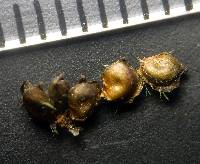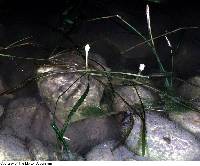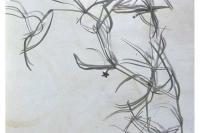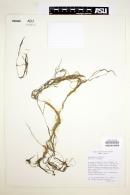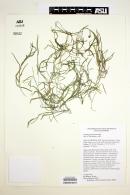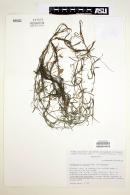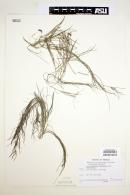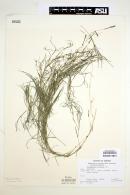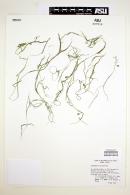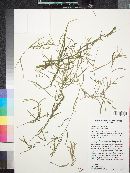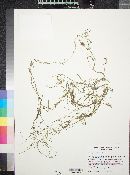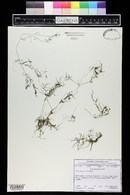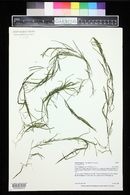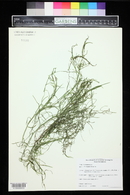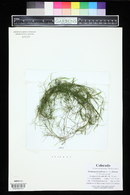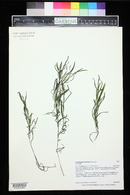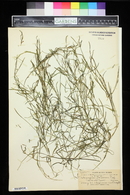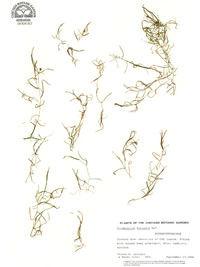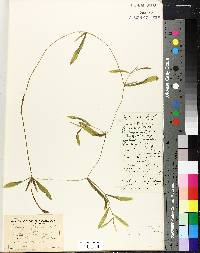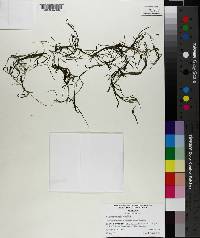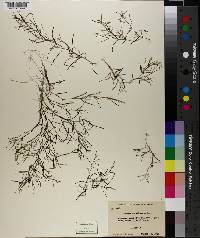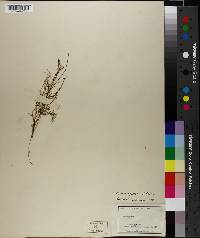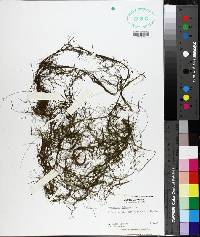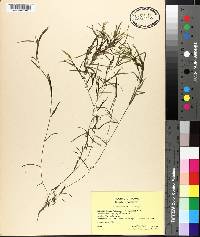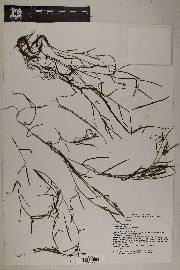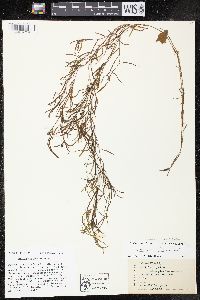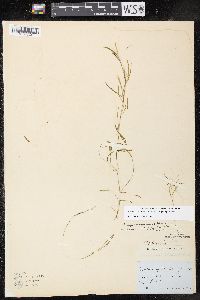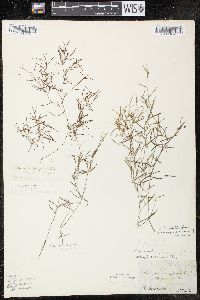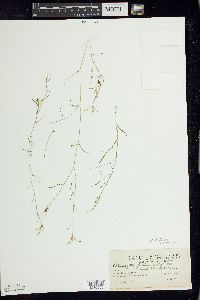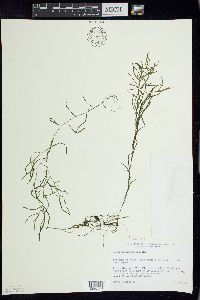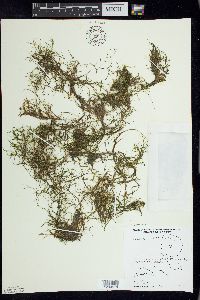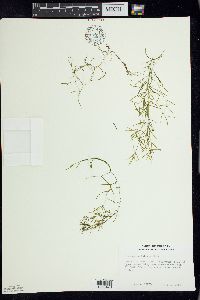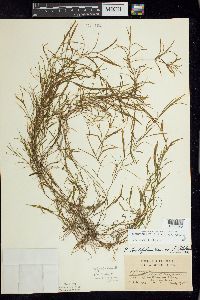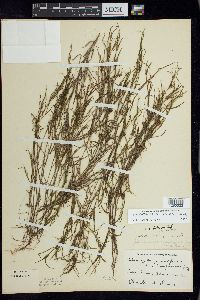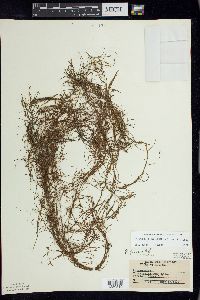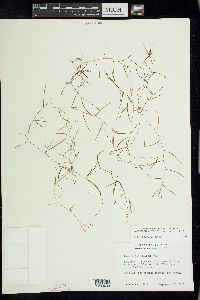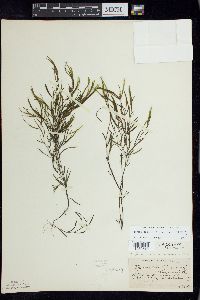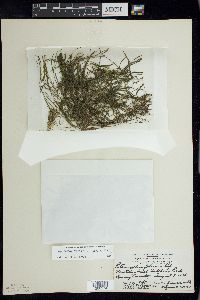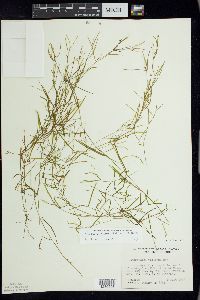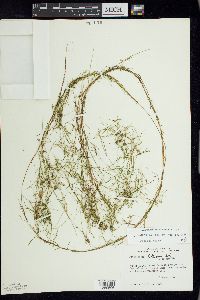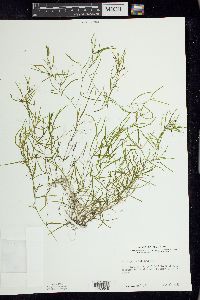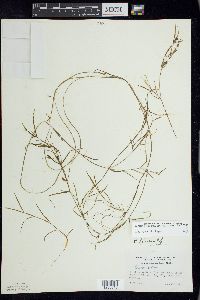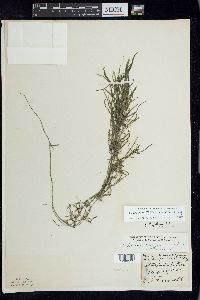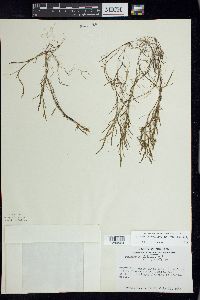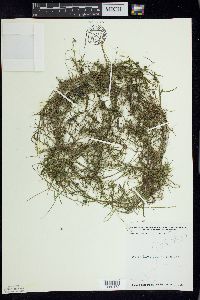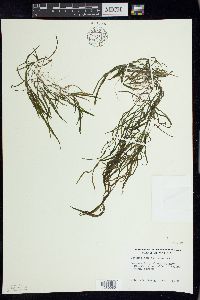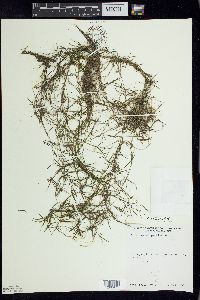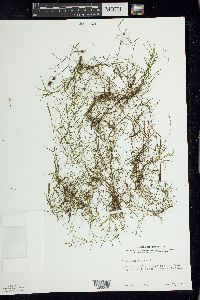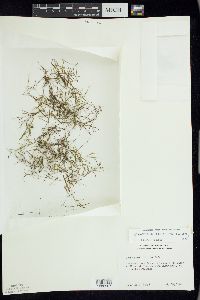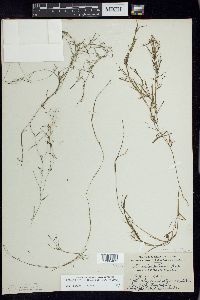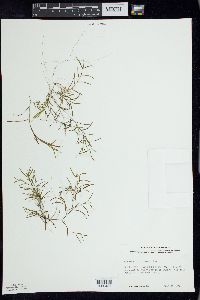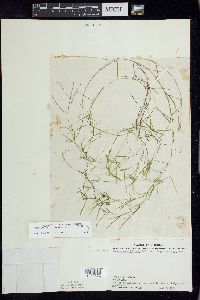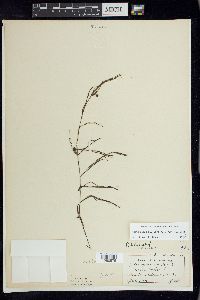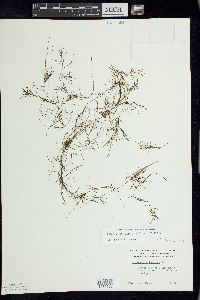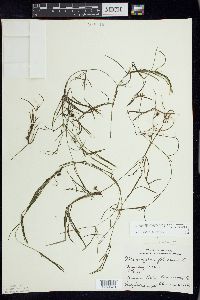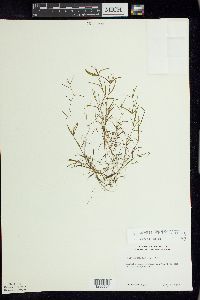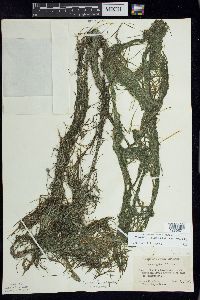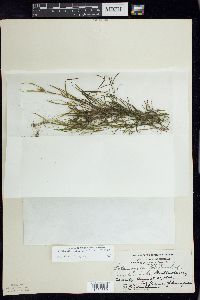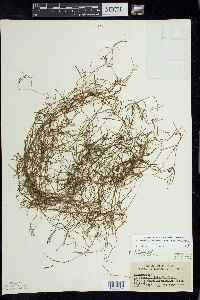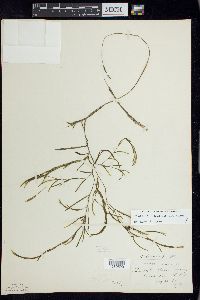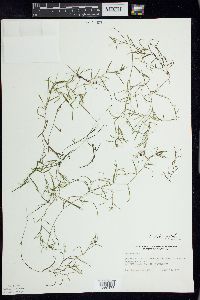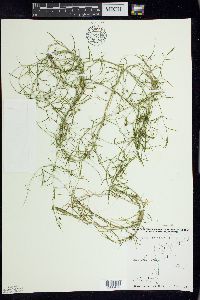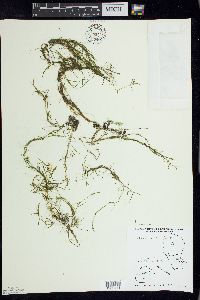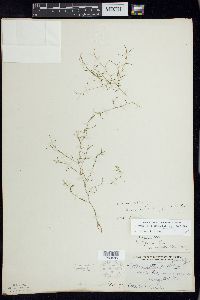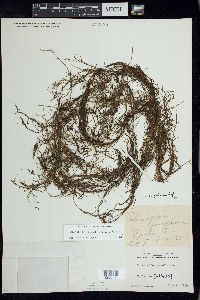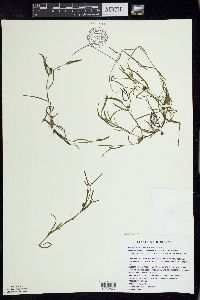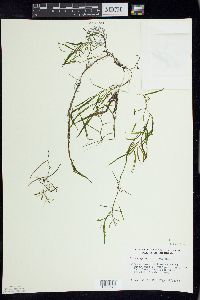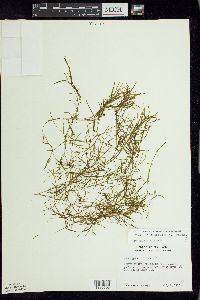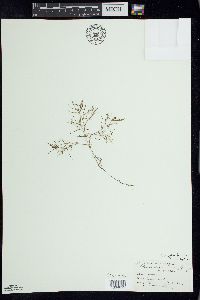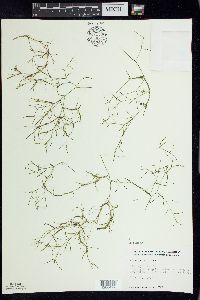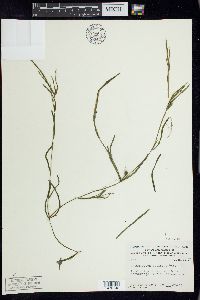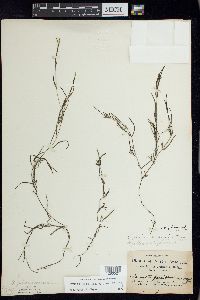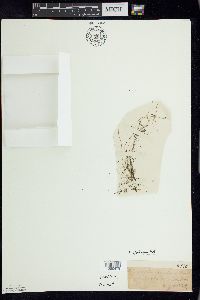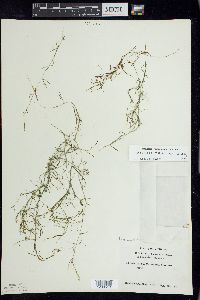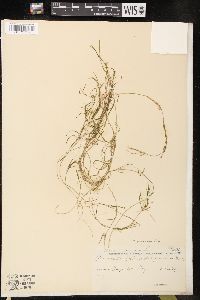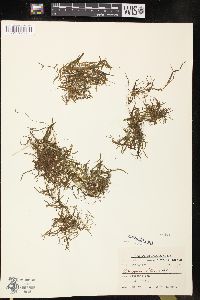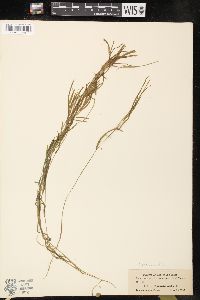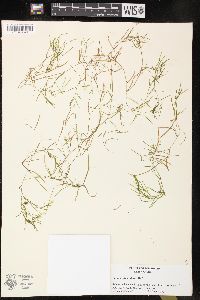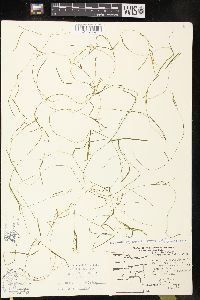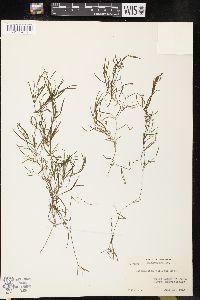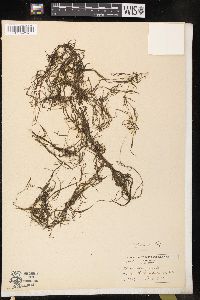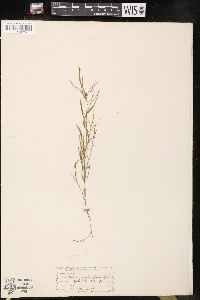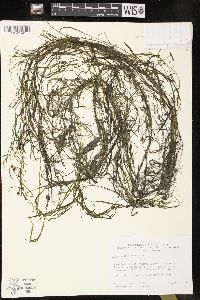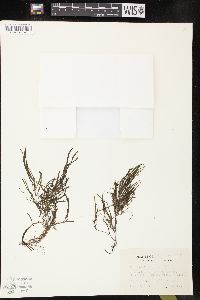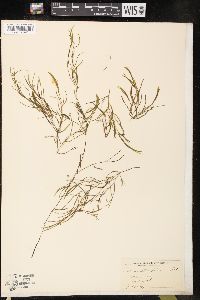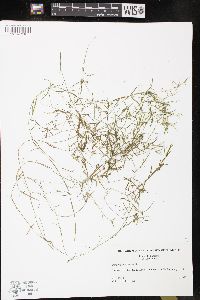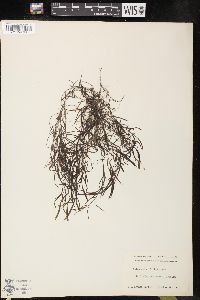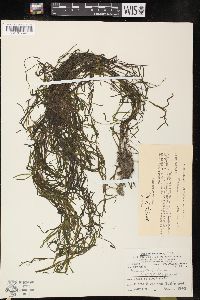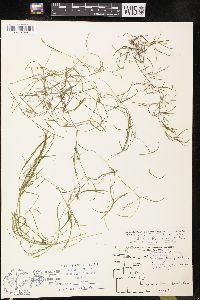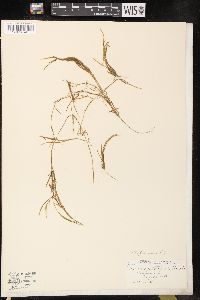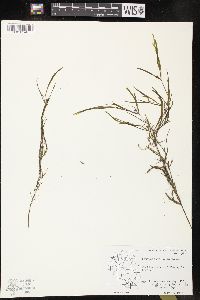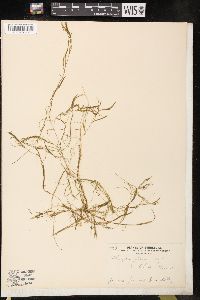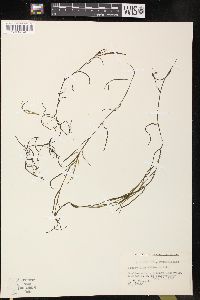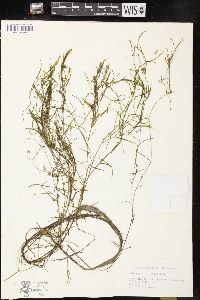Potamogeton foliosus
|
|
|
|
Family: Potamogetonaceae
Leafy Pondweed
[Potamogeton niagarensis] |
Rhizomes absent. Cauline stems slightly compressed, without spots, 4--75 cm; glands rarely present, black to gold, to 0.5 mm diam. Turions uncommon, lateral or terminal, 0.9--2.5 cm ´ 0.6--2 mm, soft; outer leaves 1--3 per side, base not corrugate, apex acute to apiculate; inner leaves rolled into hardened fusiform structure. Leaves submersed, ± spirally arranged, sessile, delicate; stipules persistent, inconspicuous, convolute, free from blade, greenish to brown or rarely white, not ligulate, 0.2--2.2 cm, delicate to fibrous, rarely shredding at tip, apex obtuse; blade pale green to olive-green, rarely somewhat reddish, linear, not arcuate, 1.3--8.2 cm ´ 0.3--2.3 mm, base slightly tapering, without basal lobes, not clasping, margins entire, not crispate, apex not hoodlike, acute to apiculate, rarely with bristle, lacunae rarely present, 0--2 rows each side of midrib; veins 1--3(--5). Inflorescences unbranched, emersed; peduncles not dimorphic, in axils of proximal, rarely distal leaves, recurved, clavate, 0.3--1.1(--3.7) cm; spikes not dimorphic, capitate to cylindric, 1.5--7 mm. Fruits pale green to olive-green or brown, obovate to nearly orbicular, turgid to concave, sessile, abaxially keeled, not laterally keeled, 1.4--2.7 ´ 1.1--2.2 mm, abaxial keel undulate, winglike; beak erect, 0.2--0.6 mm; sides without basal tubercles; embryo with 1 full spiral. Perennial submersed aquatic herb 4 cm - 0.75 m tall Stem: freely branched, slightly compressed, to 1 mm wide, jointed. Leaves: submersed, more or less arranged spirally, stalkless, translucent, bright green to dark green, sometimes slightly reddish, 1.5 - 8 cm long, 0.5 - 2 mm wide, linear with a slightly tapering base and pointed tip, typically one- to three-veined. Stipules axillary, free from leaf blade, greenish to brown, rarely white, rolled up, 0.2 - 2 cm long, fibrous or delicate. Inflorescence: an upright, head-like to cylindrical spike with one or two whorls of flowers, emersed, unbranched, 1.5 - 7 mm long, on an axillary stalk. Stalk recurved, club-shaped, 0.5 - 1.5 cm long. Flowers: greenish, tiny. Stamens four. Anthers two-chambered, with four edge-to-edge sepal-like outgrowths. Fruit: an achene, stalkless, brown or green to olive green, 1.5 - 2.5 mm long (upright beak 0.2 - 0.6 mm long), 1 - 2 mm wide, reverse egg-shaped to nearly orbicular with rounded to concave sides, plump to concave, with a wavy, wing-like dorsal keel. Similar species: This common linear-leaved species is easily distinguished by having a wavy, wing-like dorsal keel on its fruit. Flowering: late May to late August Habitat and ecology: Frequent in lakes, creeks, and ditches. Occurence in the Chicago region: native Notes: Plants in the genus Potamogeton are very important to wildlife, offering habitat and food for many aquatic animals. Etymology: Potamogeton comes from the Greek words potamos, meaning river, and geiton, meaning neighbor, referring to the habitat of these plants. Foliosus means leafy. Author: The Morton Arboretum FNA 2000, Jepson 2012, Kearney and Peebles 1969 Duration: Perennial Nativity: Native Lifeform: Forb/Herb General: Herbaceous, aquatic, annuals to perennials, stems submerged or floating, glabrous, cauline stems slightly compressed, without spots, 4-75 cm, nodal glands rarely present, black to gold, to 0.5 mm diameter, turions uncommon, soft, lateral or terminal, 0.9-2.5 cm long, 0.6-2 mm wide, rhizomes absent or rare, slender, winter buds usually present. Leaves: Submersed to floating, spirally arranged, sessile, delicate, linear, not arcuate, 1.3-8.2 cm long and 0.3-2.3 mm wide, pale green to olive-green, rarely somewhat reddish, bases without basal glands, slightly tapering, without basal lobes, not clasping, margins entire, not crispate, apices acute to apiculate, not hoodlike rarely with a bristle, lacunae rarely present, 0-2 rows each side of midrib, veins 1-5, outer leaves 1-3 per side, bases not corrugate, apices acute to apiculate, inner leaves rolled into hardened fusiform structures, stipules persistent, inconspicuous, convolute, free from blade, greenish to brown or rarely white, not ligulate, 0.2-2.2 cm, delicate to fibrous, rarely shredding at tip, apices obtuse. Flowers: Inflorescences unbranched, emersed, fruiting spikes not dimorphic, subcapitate or densely short-cylindric and 1.5-7 mm long, the peduncles not dimorphic, borne in the axils of proximal or rarely distal leaves, recurved, clavate. Fruits: Capsules, suborbicular to ovoid, 1.4-2.7 mm long and 1.1-2.2 mm wide, pale green to olive-green or brown, turgid to concave, sessile, conspicuously keeled, the keels dentate to sharply undulate, winglike, the beaks erect, 0.2-0.6 mm long, the sides withou Ecology: Found in fresh to alkaline waters. Distribution: Throughout N. Amer. and in every states in the US; south to s MEX. Notes: The long, thread-like stems and leaves of this genus can be submerged or floating on the waters surface; fruits and inflorescences are rare, but helpful for identification. Use the following to distinguish ths species: leaves sharp, very thin, <2 mm wide, glands at nodes, all leaves submerged, floating leaves, rare; leaves usually without basal glands, the fruiting spikes subcapitate or densely short-cylindric and 2-5 mm long. Synonyms: Numerous, see Tropicos Editor: LCrumbacher 2012, FSCoburn 2015 Etymology: Potamogeton comes from the Greek potamos, "a river," and geiton, "neighbor," because of the habitat, and foliosus means leafy. Stems to 7 dm, usually freely branched, slightly compressed, to 1 mm wide, usually without nodal glands; rhizome slender and elongate; lvs all submersed, linear, 1.5-8 נ0.5-2 mm, mostly acute or apiculate, 1-3(5)-veined, with 0-2 rows of lacunar cells flanking the midvein; stipulate sheaths axillary, free, greenish to brown, 0.5-2 cm, tubular, with connate margins, delicate to slightly fibrous; winter-buds uncommon, 1-2 cm, the inner lvs rolled into hard, fusiform structure; peduncles axillary, usually clavate, recurved, 5-15 mm, seldom longer; spikes mostly capitate,
2-7 mm, with 1 or 2 whorls of fls; body of the fr 1.5-2.7 mm, with rounded to often concave sides and
an undulate, wing-like dorsal keel, the beak 0.2-0.6 mm; 2n=28. Streams and ponds; N.S. and Que. to
Alas., s. to W.I. and C. Amer. Ours is the widespread var. foliosus. Gleason, Henry A. & Cronquist, Arthur J. 1991. Manual of vascular plants of northeastern United States and adjacent Canada. lxxv + 910 pp. ©The New York Botanical Garden. All rights reserved. Used by permission. |


